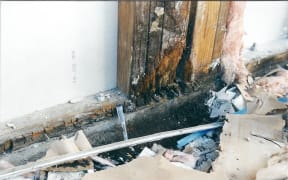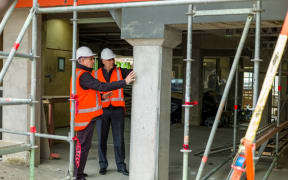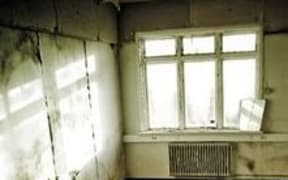
File image. Photo: 123RF
A retired house inspector is facing part liability for a $700,000 leaky building claim after he provided a pre-purchase inspection report that a council alleges was negligent.
But the retired inspector believes he has a good case to fight the claim.
Keith Milne told the Herald on Sunday the Christchurch house he inspected in May 2010 would have been markedly different from when the weathertight problems were found two years later because there were two major earthquakes and hundreds of aftershocks in the intervening period.
Milne said he noted at the time of the inspection that the extension where the problems emerged was constructed in a style that has since been found to have moisture issues, and that his moisture tests could not be invasive tests without removing wall and ceiling linings.
A claim was originally made by the homeowners against the Christchurch City Council.
However, the council has successfully applied to the Weathertight Homes Tribunal to have Milne face a share of the liability.
In the tribunal's decision published in April, chairman Paul Cogswell concluded the homeowners could have a claim against Milne, therefore the council did too.
The saga began on 13 May, 2010 when James Cooney and Paul Dempsey signed a sale and purchase agreement for the house in Scarborough, subject to a satisfactory pre-purchase inspection.
Milne provided a report on 17 May that year when he was co-owner in a Christchurch franchise of The NZ House Inspection Company.
The report said the house, which now has a capital value of $1.3 million, was in generally good condition. Some cracks were noted in the exterior cladding and repair was advised.
It said moisture levels where tested were good but the house had been built in a style that had problems with moisture ingress and regular inspection was advised with prompt attention to any defects found.
It concluded an extension was relatively sound and did not warrant further investigation or raise significant concern.
The report contained limitations and exclusions including that invasive testing was not undertaken and areas that were concealed, contained, inaccessible or that could not be seen due to walls, ceilings, floor installations, and other objects would not be inspected.
The claimants went ahead and bought the house but in August and November 2012, the extension on the house was assessed as having leaky issues.
These included:
- The junctions between the addition's plaster and the existing dwelling had failed for weather-tightness;
- Uncapped parapets had allowed moisture in and this caused decay;
- The mid-floor addition's en-suite roof junction with the original house had been leaking;
- The conservatory's addition to the lounge leaked where it abutted to the original dwelling;
- The roof above the music room leaked at the junctions to the adjacent family room skylight;
- Balcony balustrade to wall junctions leaked causing decay in wall framing in the storage shed below;
- Sill flashings had not been installed under the windows and this allowed moisture ingress, resulting in decayed timber framing;
- Roof water discharged onto the balcony, exacerbating the leak.
Cogswell said it was arguable, based on the extent of defects identified by assessors in three reports obtained by the claimants, that Milne's report was negligent.
He said many of the defects could have been seen on visual inspection, and that many found in 2012 would have existed at the time of the pre-purchase inspection report.
The claim against the council was that it failed in its consenting, inspecting, and certifying role as the relevant territorial authority.
However, the council claimed there was negligent misstatement or breach of the Fair Trading Act 1986 by Milne because of the alleged defective inspection.
"The situation is that the council seeks an indemnity or contribution from Mr Milne for any amount it is ordered to pay the claimants despite there being no claim by the claimants against Mr Milne."
Cogswell said negligent misstatement was arguably met as Milne was "arguably imposed with a duty of care when preparing the report for the claimants, the report was arguably negligent and the claimants arguably relied on it, causing them loss".
He found that Milne could face a claim in contribution or indemnity from the council arising from his alleged breach by preparation of an allegedly negligent pre-purchase building report.
"Such a finding provides the basis to conclude that there is a legally tenable cause of action against Mr Milne."
Cogswell said the claimants' decision to go unconditional was arguably because they were "deceived by the misleading report and so, damage arose from the impugned report".
He accepted there was also liability under the Fair Trading Act in relation to the alleged "misleading pre-purchase inspection" report.
Milne said he retired in 2015 and wound up the inspection business, no longer had liability insurance, and could not understand why the claim had dragged on for a decade.
He said he would be forced into bankruptcy if he lost.
"It's not much fun to have that hanging over you."
Christchurch City Council said it could not properly comment while the case was ongoing.
This story was originally published on the New Zealand Herald.






